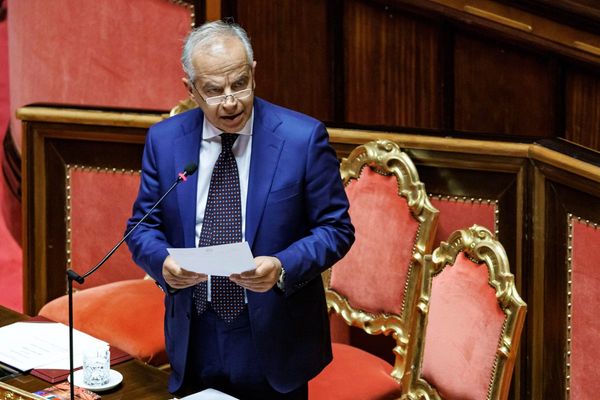
Washington (AFP) - Rising rent and a gasoline price rebound helped keep US consumer prices elevated in January, according to government data released Tuesday, signaling that policymakers' battle against inflation is not over.
The US central bank has hiked interest rates rapidly in the past year to raise borrowing costs and cool demand in the world's biggest economy, as inflation skyrocketed.
But even as the consumer price index (CPI), an important inflation gauge, eases from decades-high levels, the numbers point to some stickier areas.
With the effects of policy rippling through the economy, the CPI rose 6.4 percent in January from a year ago, according to Labor Department data.This was a touch below December's figure and the smallest annual increase since October 2021.
But it remains significantly above policymakers' two percent target.
From December to January, the CPI rose 0.5 percent, picking up from 0.1 percent in December and indicating the Federal Reserve has some way to go in lowering costs.
"The index for shelter was by far the largest contributor...accounting for nearly half of the monthly all items increase," said the report.
The indices for food, gasoline and natural gas also contributed.
Excluding the volatile food and energy components, so-called core CPI rose 5.6 percent from January 2022, also the smallest increase in around a year.
"There is still more work to do as we make this transition to more steady, stable growth, and there could be setbacks along the way," said President Joe Biden in a statement.
He added that latest data "reinforces that we have made historic progress and are on the right track, and now we need to finish the job."
Wall Street stocks were muted Tuesday on the latest data.
'Higher-for-longer' rates
There was only modest improvement in annual inflation, as well as in services inflation excluding volatile components and housing, said Rubeela Farooqi of High Frequency Economics.
This measure of underlying services costs is closely eyed by the Fed.
"For Fed officials, a slow grind down in inflation only supports the higher-for-longer view on interest rates," Farooqi warned.
While higher interest rates may typically be associated with an uptick in unemployment and demand slowdown, the economy's resilience lends hope to the possibility that the United States can avoid a major downturn.
On Tuesday, New York Fed President John Williams said in a speech that he expects GDP growth to come in around one percent this year, higher than the Fed's median projection of 0.5 percent released in December.
"There are a few bright spots in today's inflation numbers, including the very modest 1.5 percent increase in gasoline prices," added Neil Saunders of analytics firm GlobalData.
But many "gains made from savings on gas are having to be spent elsewhere," Saunders said.
Food prices were still around 10 percent higher in January from a year ago, and electricity costs were up 11.9 percent.
'Stickier' components
"You don't want to make too much out of a single month," warned Ryan Sweet of Oxford Economics.He noted that supply chain stress and energy prices can impact monthly numbers.
"Some stickier components are what we'll be paying more attention to, for example rents," he told AFP.
He believes rental costs "won't peak until the second half of this year," while wage growth remains robust and there is still pent-up demand for services spending.
A strong labor market supports incomes and, in turn, demand.
"During the pandemic, people shifted their spending away from services because they couldn't go out to restaurants, bars, sporting events," he said.
With Covid-19 restrictions easing, people are now turning back to services, which make up the bulk of consumer spending, Sweet said.
While goods disinflation will continue, it will take a significant amount to offset services inflation in the pipeline.
"Policymakers have more work to do...and are likely to continue lifting rates and will keep policy restrictive for some time," Farooqi said.
Fed Governor Michelle Bowman cautioned in a speech Monday that it would likely be "necessary to further tighten monetary policy to bring inflation down toward our goal."
Williams added Tuesday that "subdued growth" will probably be needed to bring inflation down, adding that the Fed would "stay the course until our job is done."







